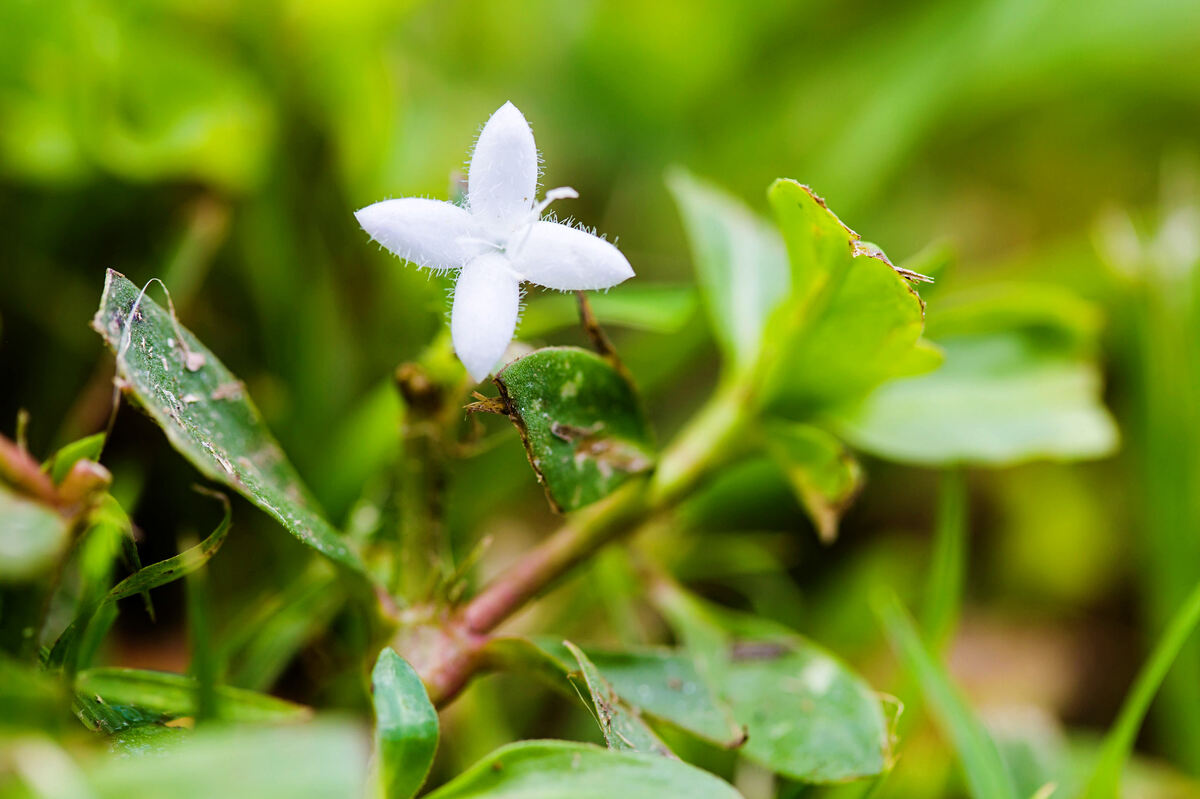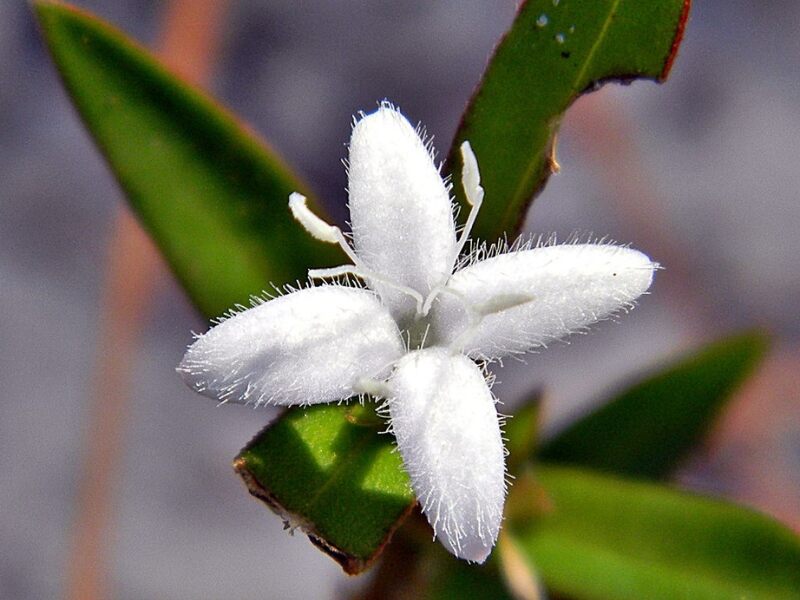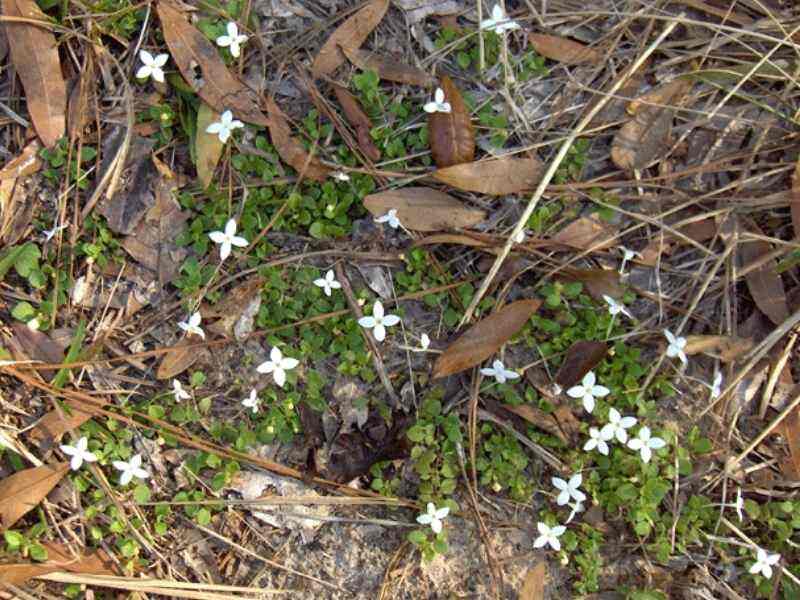
Ever looked at your yard and noticed a strange, sprawling weed with small white flowers and wondered what it was? Well, you might be dealing with Virginia buttonweed.
Before we dive into the details, let’s get one thing straight: Not all weeds are created equal. Some are more stubborn and difficult to control than others, and Virginia buttonweed definitely falls into the “tough to beat” category. But with a bit of knowledge and the right approach, you can keep this invader in check and maintain a healthy, beautiful lawn.
What is Virginia Buttonweed?

Virginia buttonweed is a perennial weed, meaning it comes back year after year if not properly managed. It thrives in warm, humid climates, making it a common problem in the southern U.S., from Missouri east to New Jersey and south to the Gulf. This broadleaf weed is known for its distinctive, small, star-shaped flowers that are typically white but can have pinkish streaks.
One of the reasons Virginia buttonweed is so tricky to control is its reproductive habit. It spreads both by seeds and by underground stems called rhizomes. This means that even if you pull up the visible part of the plant, it can still regrow from its roots. Additionally, the weed can produce seeds that can germinate and grow into new plants, adding to its persistence.
How to Identify Virginia Buttonweed

Identifying Virginia buttonweed is the first step in controlling it. Here are some key characteristics to look for:
Leaves
The leaves of Virginia buttonweed are opposite, meaning they grow in pairs on either side of the stem. They are lance-shaped, about 1 to 3 inches long, and have a slightly rough texture. The leaves are a deep green color and may have a slight shine to them.
Stems
The stems of Virginia buttonweed are hairy and can grow horizontally along the ground, which helps the plant spread. These stems can root at the nodes (the points where the leaves attach), making it easy for the weed to establish new plants.
Flowers
The most distinctive feature of Virginia buttonweed is its flowers. They are small, star-shaped, and typically white with pink streaks. The flowers grow in clusters at the leaf axils (the point where the leaf joins the stem). Each flower has four petals and is about 1/2 inch in diameter.
Seeds
Virginia buttonweed produces small, flattened seeds that can be spread by water, animals, or human activity. These seeds can remain viable in the soil for several years, contributing to the weed’s persistence.
Where Does Virginia Buttonweed Thrive?

Virginia buttonweed prefers moist, warm environments. It is commonly found in lawns, gardens, and other landscaped areas, especially those that are overwatered or poorly drained. The weed can tolerate a wide range of soil types, but it thrives in rich, fertile soils.
- Lawns: In lawns, Virginia buttonweed often goes unnoticed until it starts to spread and becomes more visible. It can quickly take over thin or weak areas of the lawn, outcompeting desirable grasses.
- Gardens: In gardens, it can be particularly troublesome as it can smother low-growing plants and compete for nutrients and water.
- Wet areas: Virginia buttonweed is especially common in wet areas, such as along the edges of ponds, streams, and ditches. It can also be found in low-lying areas of the lawn that tend to stay damp. If you have a problem with standing water or poor drainage in your yard, you’re more likely to encounter this weed.
How to Control Virginia Buttonweed
Getting rid of Virginia buttonweed takes a mix of strategies. Here’s how to do it:
- Maintain a healthy lawn.
- Hand-pull small patches.
- Use herbicides for larger areas.
Want a detailed guide on how to do this? Check out: “How to Get Rid of Virginia Buttonweed.”
More Weed Control Resources
Looking for more tips to keep your lawn healthy and weed-free? Check out these helpful guides:
- Guide to Weed Control in Your Yard
- How to Get Rid of Stubborn Weeds in Your Grass
- How to Remove Weeds From Gravel
- Types of Post-Emergent Herbicides
- When and How to Use Pre-Emergent Herbicides to Kill Your Lawn’s Weeds
- Applying Post-Emergent Herbicides to Your Lawn
FAQ About Virginia Buttonweed
Can Virginia Buttonweed Harm My Pets?
Virginia buttonweed is not known to be toxic to pets, but it can create dense, matted areas that might be uncomfortable for them to walk or play on. Moreover, if pets consume large quantities of the weed, it could cause digestive problems.
How Can I Prevent Virginia Buttonweed From Coming Back?
Preventing Virginia buttonweed from returning involves maintaining a healthy lawn and addressing any conditions that favor its growth, such as poor drainage or overwatering. Regular monitoring and prompt removal of new weeds can also help keep this invasive plant in check.
Are There Any Natural Methods to Control Virginia Buttonweed?
Natural methods to control Virginia buttonweed include maintaining a dense lawn to outcompete the weed, hand-pulling, and improving soil drainage. While these methods may require more effort, they can be effective in preventing the spread of this weed without the use of chemicals.
You may also consider organic herbicides or using what you have around the house to create homemade weed killers.
Let the Lawn Pros Handle Your Lawn
If you’re struggling with a severe infestation of Virginia buttonweed or need professional assistance, don’t hesitate to contact a local lawn care pro. They have the expertise and tools to help you tackle any type of weed and keep your yard looking its best all year long.
Main Photo Credit: Melissa McMasters / Flickr / CC BY 2.0